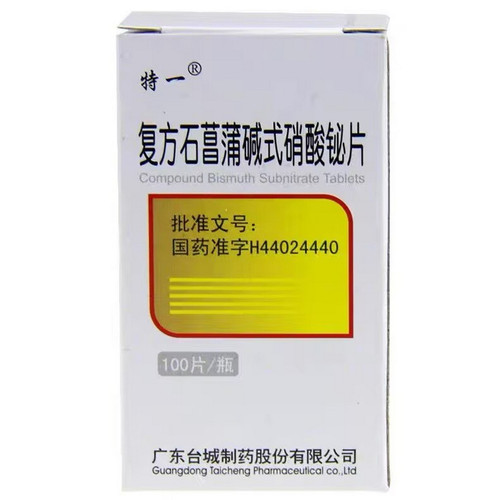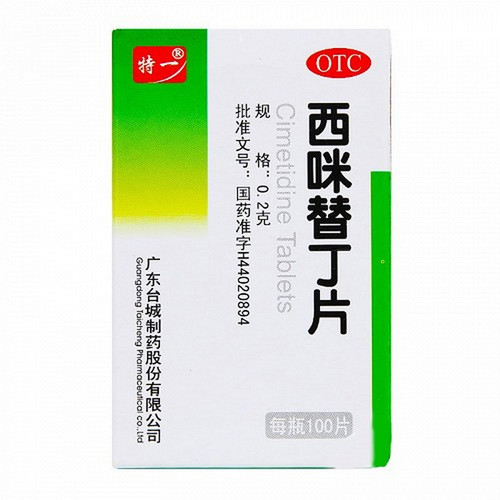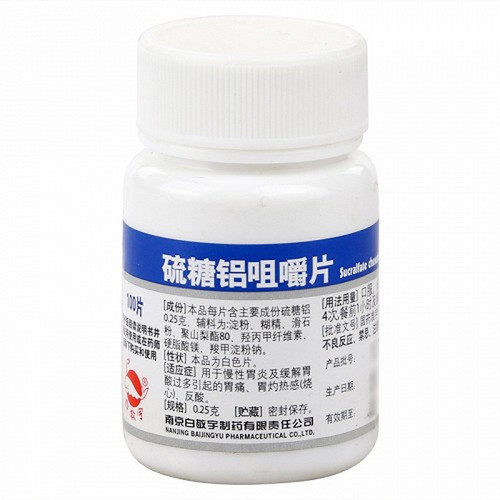Product Overview
[Drug Name]
Generic Name: Pyrazinamide Tablets
Trade Name: Teyi Pyrazinamide Tablets 0.25g x 100 Tablets
Pinyin Code: TeYi ZuoZuoZuoAnPian
[Main Ingredient]
The main ingredient of this product is pyrazinamide.
[Properties]
This product is a white tablet.
[Indications/Main Functions]
For the treatment of tuberculosis in combination with other anti-tuberculosis drugs (such as streptomycin, isoniazid, rifampicin, and ethambutol). This product is only effective against mycobacteria.
[Specifications]
0.25g x 100 tablets (Teyi)
[Dosage and Administration]
Oral. The usual adult dosage, in combination with other anti-tuberculosis drugs, is 15-30mg/kg daily orally, or 50-70mg/kg 2-3 times per week. The maximum daily dose is 2g for daily use, 3g for 3 times per week, and 4g for 2 times per week.
[Adverse Reactions]
1. Gastrointestinal reactions are the most common. Oral administration of this drug may result in anorexia, nausea, vomiting, upper abdominal discomfort, diarrhea, and other gastrointestinal reactions, with an incidence of 1.7% to 4.0%, but these reactions are generally well tolerated.
2. Hepatotoxicity is the primary adverse reaction of this drug, with an incidence of approximately 1%. During the first few weeks of treatment, a small number of patients may experience elevated serum aminotransferases, hepatomegaly, and jaundice. These are usually asymptomatic, transient elevations in serum aminotransferases that resolve spontaneously during treatment. These reactions are more common in the elderly, alcoholics, those with malnutrition, or those with pre-existing liver disease or other factors causing liver dysfunction.
3. Allergic Reactions: A "flu-like syndrome" may occasionally occur after high-dose intermittent therapy, manifested by chills, rigors, fever, malaise, dyspnea, dizziness, drowsiness, and muscle aches. The frequency of these reactions is significantly related to the dose and the duration of the intermittent therapy. Acute hemolysis or renal failure may occasionally occur, and the mechanism is currently believed to be an allergic reaction.
4. In other patients, urine, feces, saliva, sputum, and tears may discolor orange after taking this drug. Occasionally, leukopenia, shortened prothrombin time, headache, dizziness, and visual impairment may occur.
[Contraindications]
1. This product is contraindicated in patients with allergies to this product or rifamycin antibiotics.
2. It is contraindicated in patients with severe liver dysfunction, biliary obstruction, and pregnant women under three months of age.
[Drug Interactions]
1. This product can increase blood uric acid concentrations and reduce the efficacy of these drugs for gout. Therefore, the dose should be adjusted to control hyperuricemia and gout when used together.
2. Coadministration with ethionamide may enhance adverse reactions.
3. Cyclosporine blood concentrations may be reduced when used concomitantly with pyrazinamide. Therefore, blood drug concentrations should be monitored and the dose adjusted accordingly.
[Precautions]
1. Cross-sensitivity: Patients allergic to ethionamide, isoniazid, niacin, or other chemically similar drugs may also be allergic to this product.
2. Interference with Diagnosis: This product may react with sodium nitrocyanide to produce a reddish-brown color, affecting urine ketone assay results; it may also increase alanine aminotransferase, aspartate aminotransferase, and serum uric acid concentrations.
3. Use with caution in patients with diabetes, gout, or severe hepatic impairment.
4. Elevated serum uric acid levels are common during treatment with this product, potentially leading to acute gout attacks; serum uric acid measurement is necessary.
5. This product can also be administered intermittently, twice weekly, at 50 mg/kg each time.
[Pediatric Use]
This product is highly toxic and should not be used in children. If necessary, consider the risks and benefits carefully.
[Elderly Use]
Follow your doctor's instructions.
[Overdose]
Unknown.
[Pharmacology and Toxicology]
This product has a strong antibacterial effect against Mycobacterium tuberculosis. Its bactericidal effect is strongest at pH 5-5.5. It is currently the best bactericidal agent against tuberculosis bacteria that grow slowly within phagocytes in an acidic environment. This product has an antibacterial concentration of 12.5 μg/ml in vivo, and can kill Mycobacterium tuberculosis at a concentration of 50 μg/ml. The concentration at which this product inhibits Mycobacterium tuberculosis is 10 times lower inside cells than outside cells, and it has virtually no antibacterial effect in neutral or alkaline environments. Its mechanism of action may be related to pyrazinoic acid. After pyrazinamide penetrates phagocytes and enters the tuberculosis bacilli, the amidase enzyme within the bacterium deamidates it, converting it to pyrazinoic acid, which exerts its antibacterial effect. Furthermore, because pyrazinamide is chemically similar to nicotinamide, it displaces nicotinamide and interferes with dehydrogenase, inhibiting dehydrogenation and hindering the tuberculosis bacilli's oxygen utilization, thus affecting the bacteria's normal metabolism and causing death.








